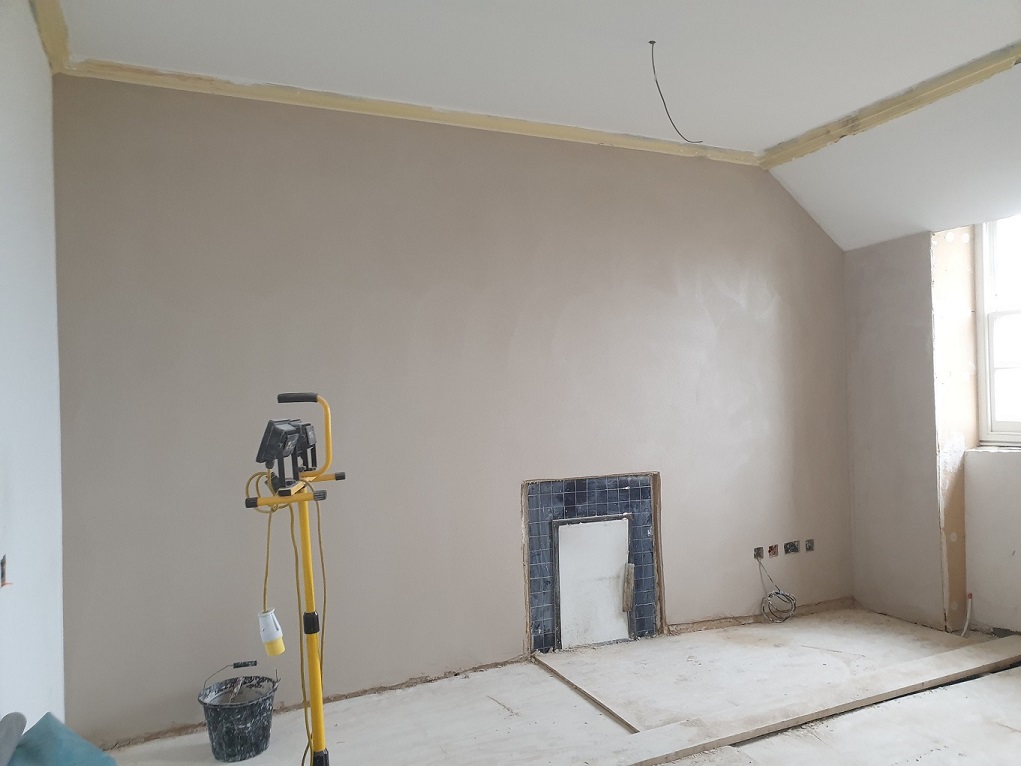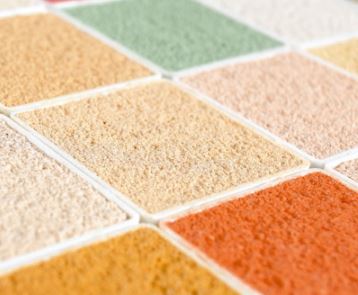Knowledge base
Lime Plastering Onto Laths
Lime plasters were frequently plastered onto lath backgrounds in the past, and this is still carried out today when making repairs or in some new-build situations.
Lime plastering on laths generally requires more skill and is slower than plastering on masonry, but if done correctly can give a high quality finish. Our lightweight basecoat "Ultra" makes the job significantly quicker and easier, especially on ceilings.
1. Types of Laths
Wooden lath: Wooden laths should be stored dry and should not be green when fixed. Riven (split) laths are stronger and more flexible than sawn. Hardwood laths such as oak or chestnut are generally better than softwood. Wooden laths must be staggered rather than fixed with their ends in straight lines.
Metal Lath: Various types of metal laths are available, also known as EML (Expanded Metal Lath). You must use a lath designed for mineral renders, not gypsum plasters – consult the manufacturer. Be aware that they have a top and bottom, and must be fixed the right way up. Rib lath is stiffer and generally superior to other types, though all are more difficult to lime plaster onto than wooden lath. Metal laths are not really designed for very soft lime plaster
Plastic: Proprietary systems are also available, made from a dimpled plastic sheet with a glued on plastic "lath", such as Newton lath. As there is no suction these are better for products with a more defined set, such as our Forte undercoat.
Reed Board: Can be used as a natural alternative to metal lath.
2. Preparation of the Laths
Old wooden laths should be thoroughly cleaned, with all loose mortar and dust brushed off. Dampen wooden laths with water the day before application and again a few hours before hand so that they don't swell after you've plastered them.
3. Fixing the laths
Metal and plastic laths should be fitted in accordance with the manufactures instructions; do not use more than one type of metal when fixing the lath e.g stainless metal laths should be fixed with stainless metal screws and washers. Wooden lath should be fixed with an around a 7-9mm gap between them and 3mm gap between ends. Joints are usually staggered every 12th lath.
4. Product Selection
Please note, for high vibration situations (e.g. single joist ceilings) additional fibre reinforcement may need to be added to pre-mixed lime plasters before use. Trials are strongly recommended before any product is chosen.
Wooden Lath: Lime Green Ultra is suitable for most situations, as it is lightweigh, easy to apply and low shrinkage. Typcially 2 coats of Ultra are applied, followed by a skim finish.
Metal Lath: Not really designed for traditional lime plasters, Lime Green Forte is best to ensure a good durable result. Typcially you would use 2 coats and then a skim of a finish plaster.
Plastic Lath: A hard setting render works better, such as our undercoat Lime Green Forte.
Reed Board: As for Wooden lath (see above)
5. Plastering
Good quality work on laths generally requires 3 coats, though sometimes only 2 coats were used historically. Due to the huge variations in lath sizing and design, trials must always be undertaken to ensure the compatibility of lime plaster with the lath system.
Lime plaster should always be mixed to a stiff, plastic consistency. It should not be so wet that it runs or drips off the trowel
First Coat
On wooden laths the plaster should be applied in a diagonal direction to the laths ensuring the lime plaster pushes through the gaps in the lath fully, so a “nib” forms on the other side. The front of the lath is covered by approx. 8mm. Other work likely to cause vibrations must not be carried out until the first coat has set. This coat must be well scratched once the lime plaster has set, but while it is still green with a diamond pattern 45° to the laths. For curing / setting times, see relevant datasheets.
Second Coat
A floating coat, which will add approx. 10 to 12mmin thickness to the first. Scratch while green with a devil or nail float. This coat is normally the same product as the first.
Final Coat
A thin skim of fine lime plaster will give the desired texture and smoothness, often no more than 3mm thick. Adequate time between coats must be left, normally around 1 week. Recommended products are our “Fine Stuff” or our faster setting option Lime Green Solo.
To find out more about any of our products or build systems, and how you can use them effectively, call Lime Green today on 01952 728611 or contact your local stockist to purchase products.
Further reading :
Historic Scotland Technical Advice note 2 1994 ISBN0 9517989 5 2
Mortars, Plasters, and renders in Conservation Second Edition John Ashurst EASA
The relevant British Standards (e.g. BS EN 13658-1 and 13658-2, BS EN 5262) and our datasheets.
Technical Note C1: Plastering onto Laths

